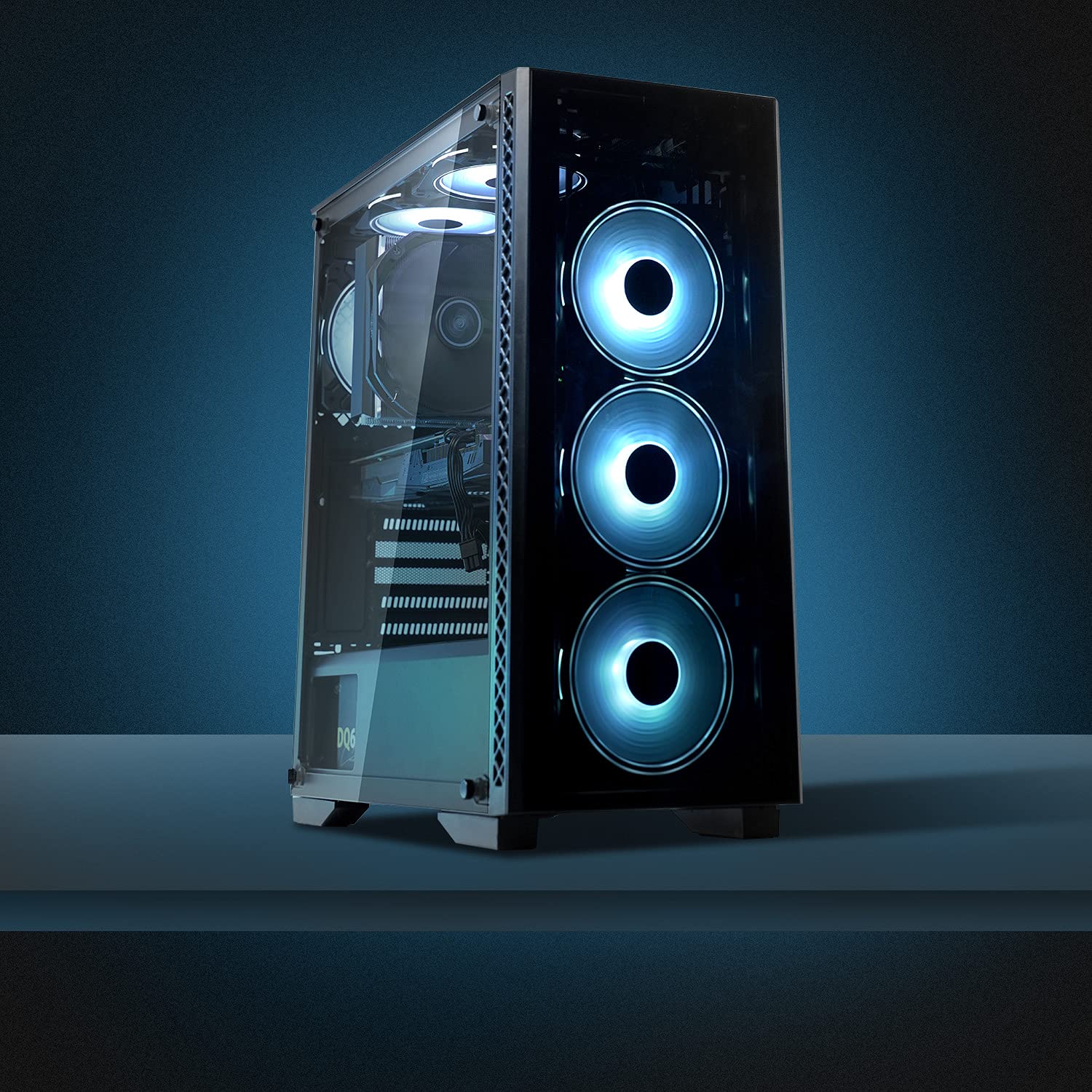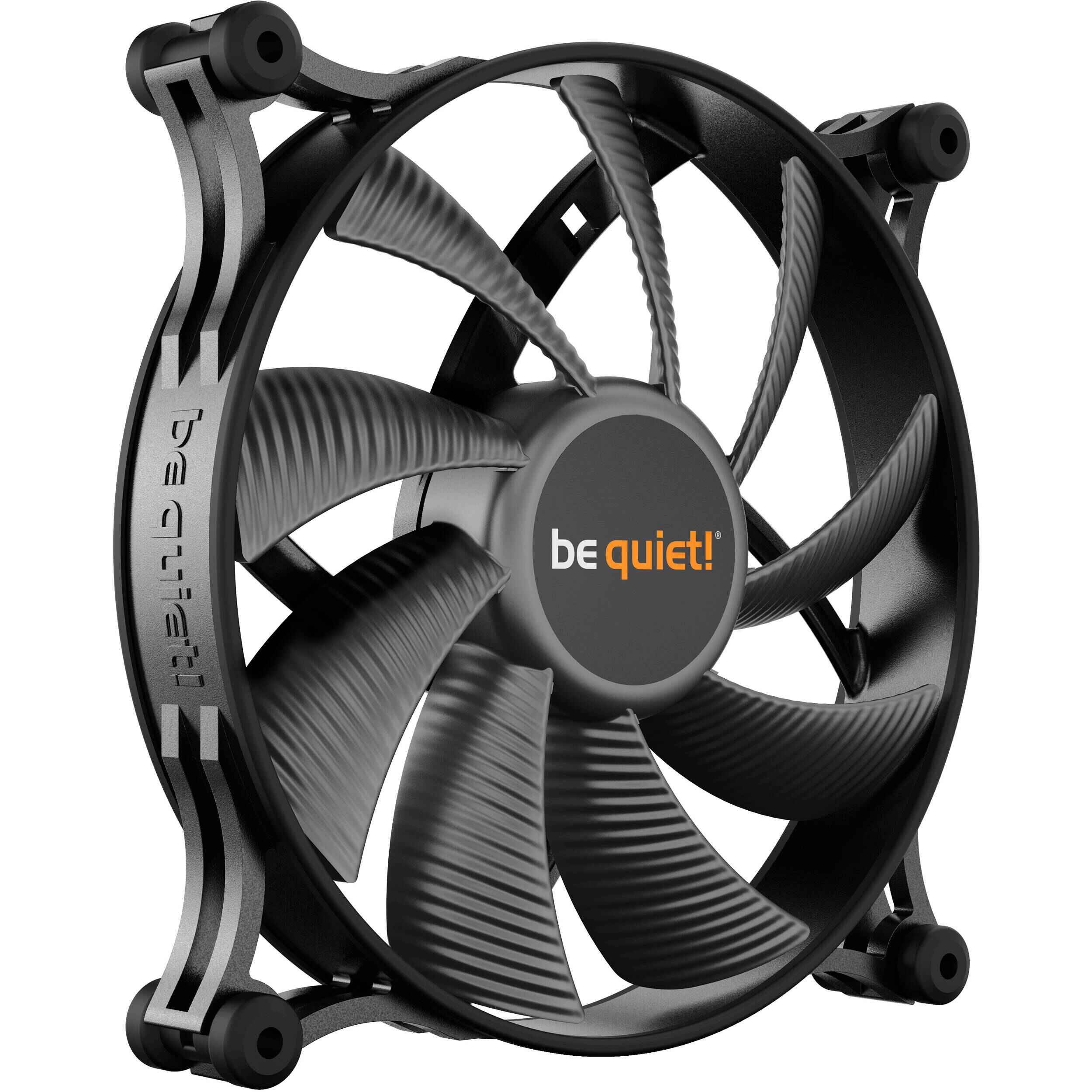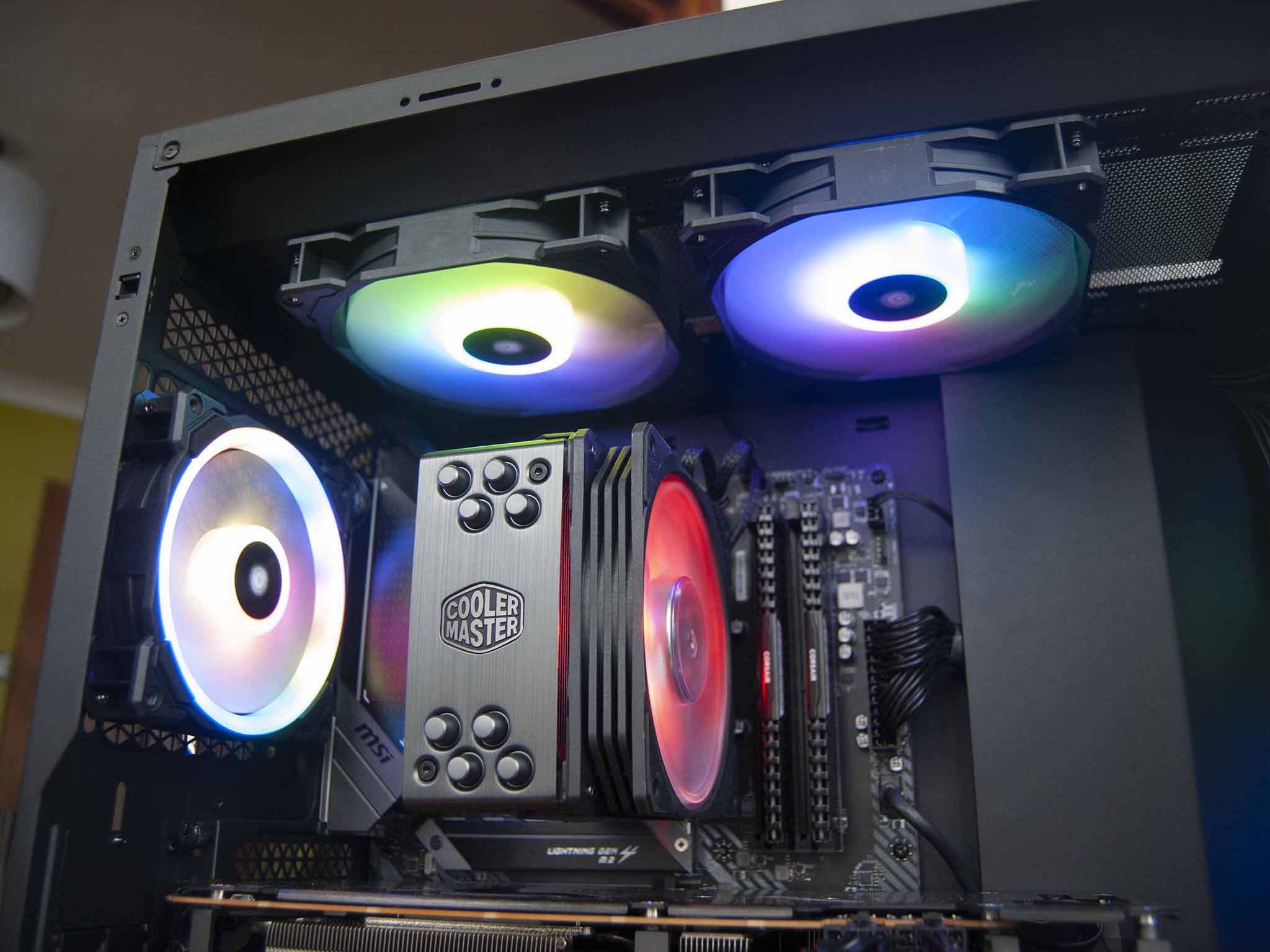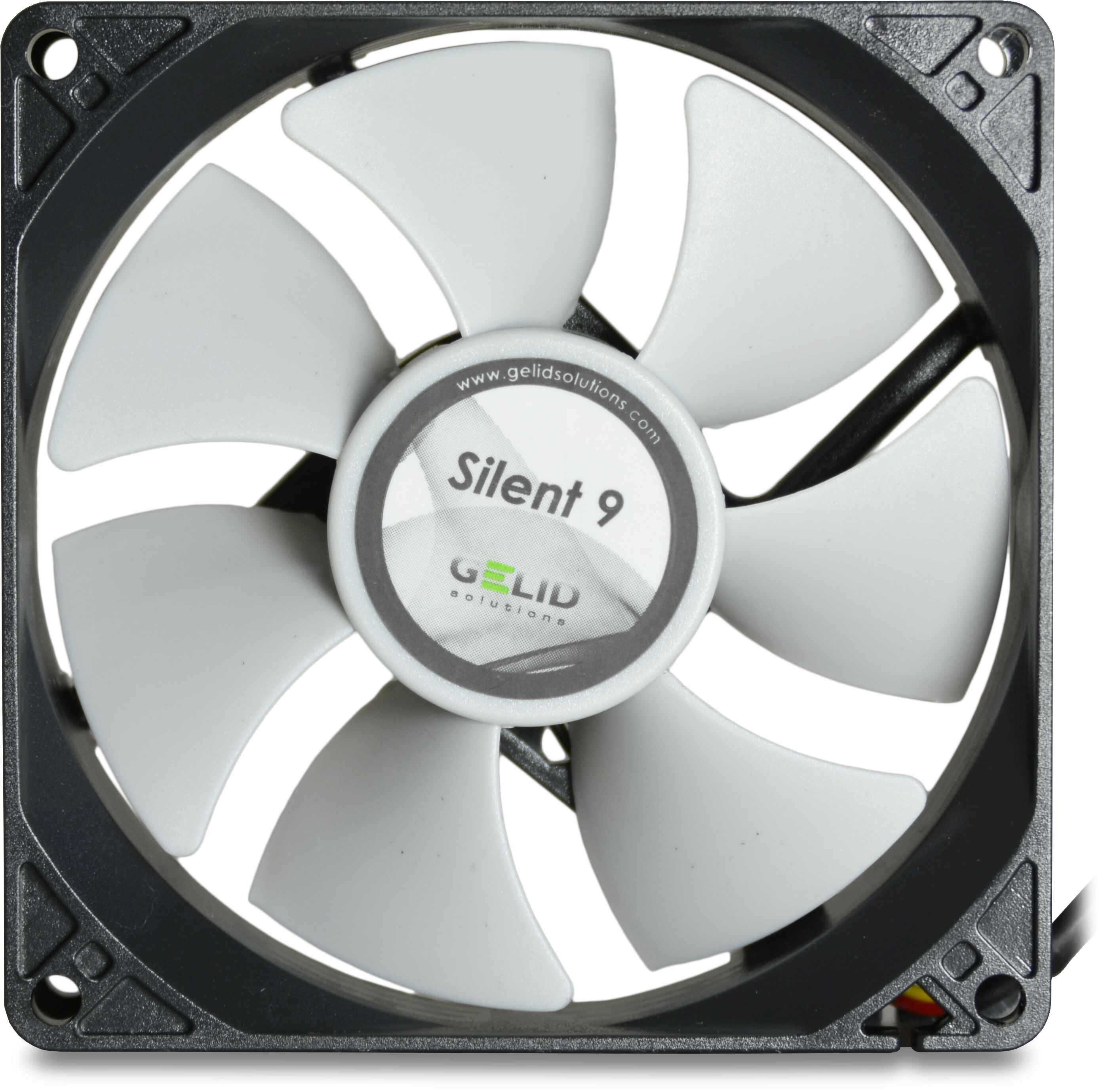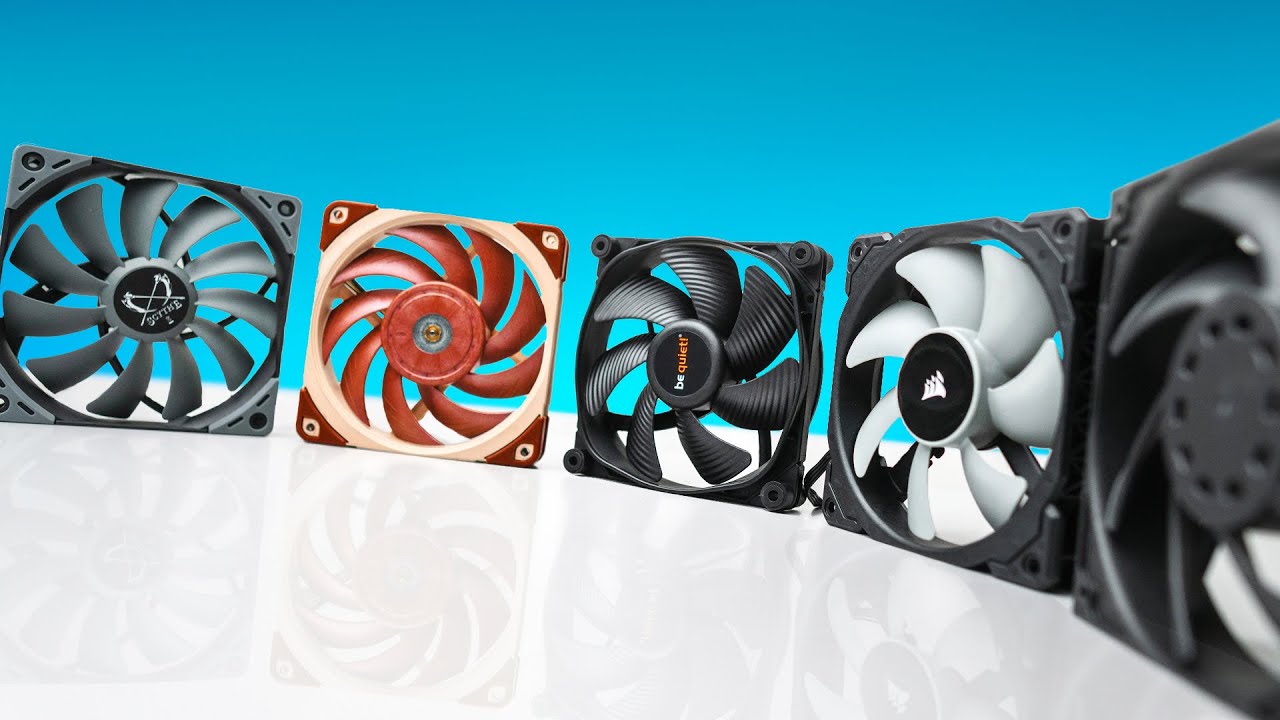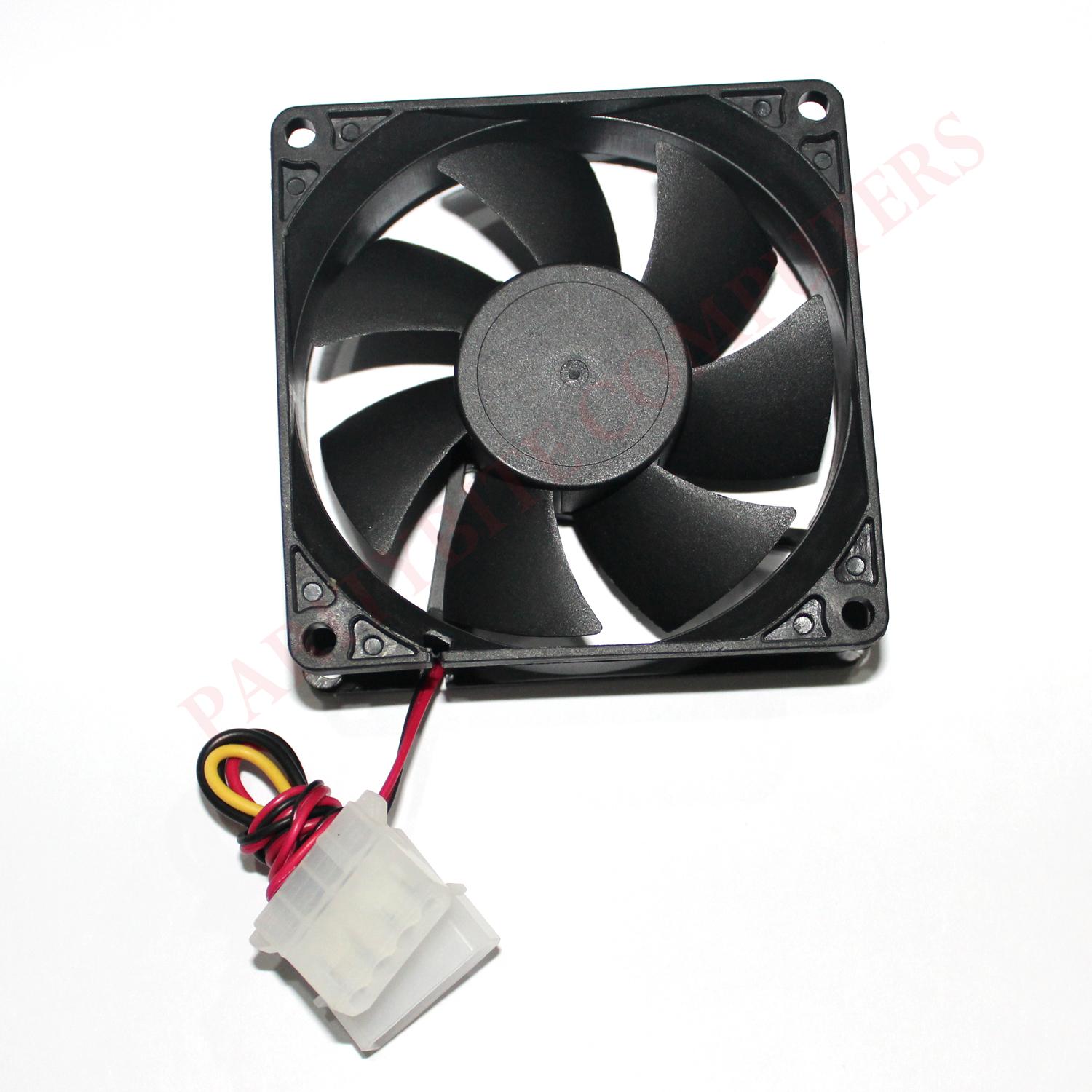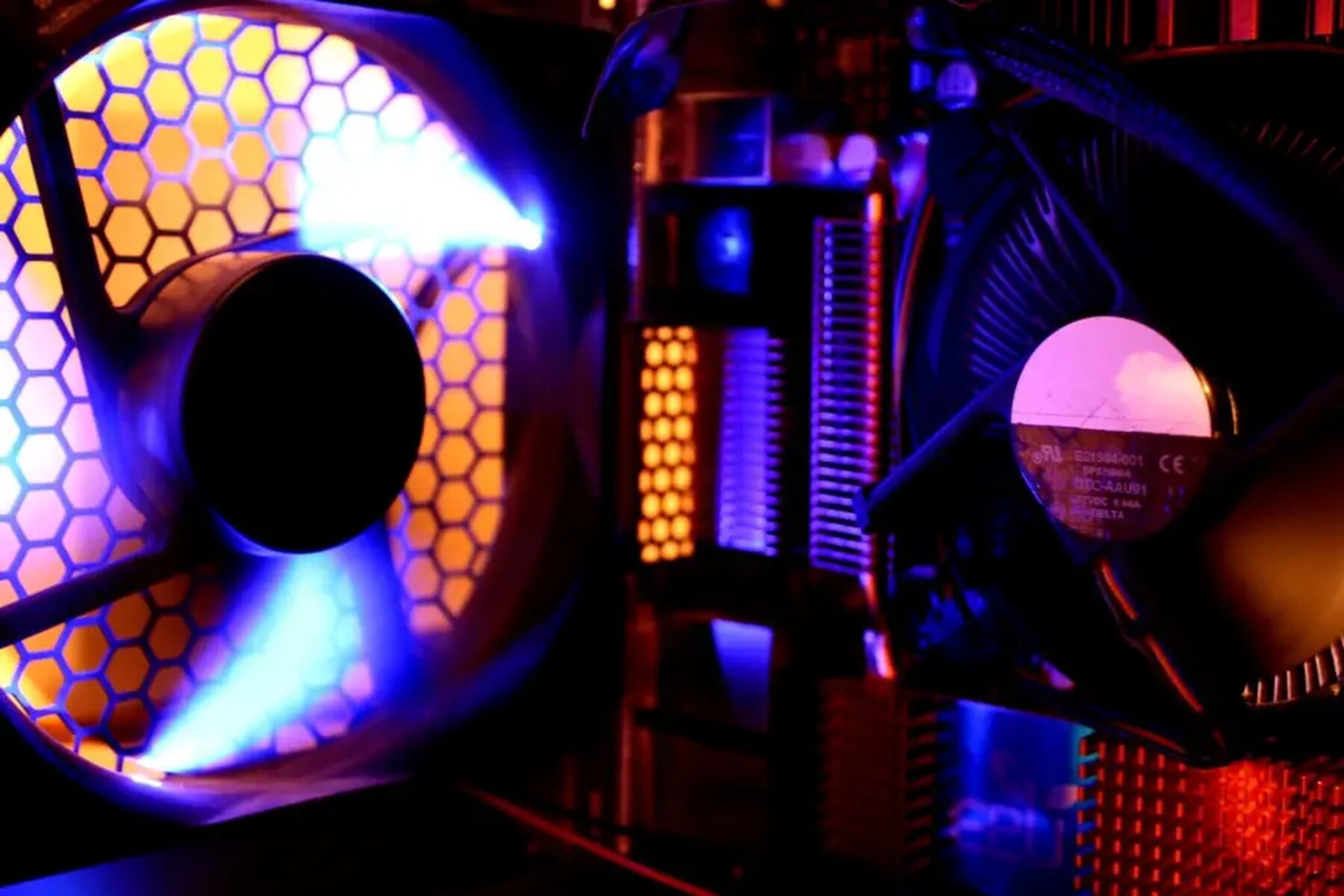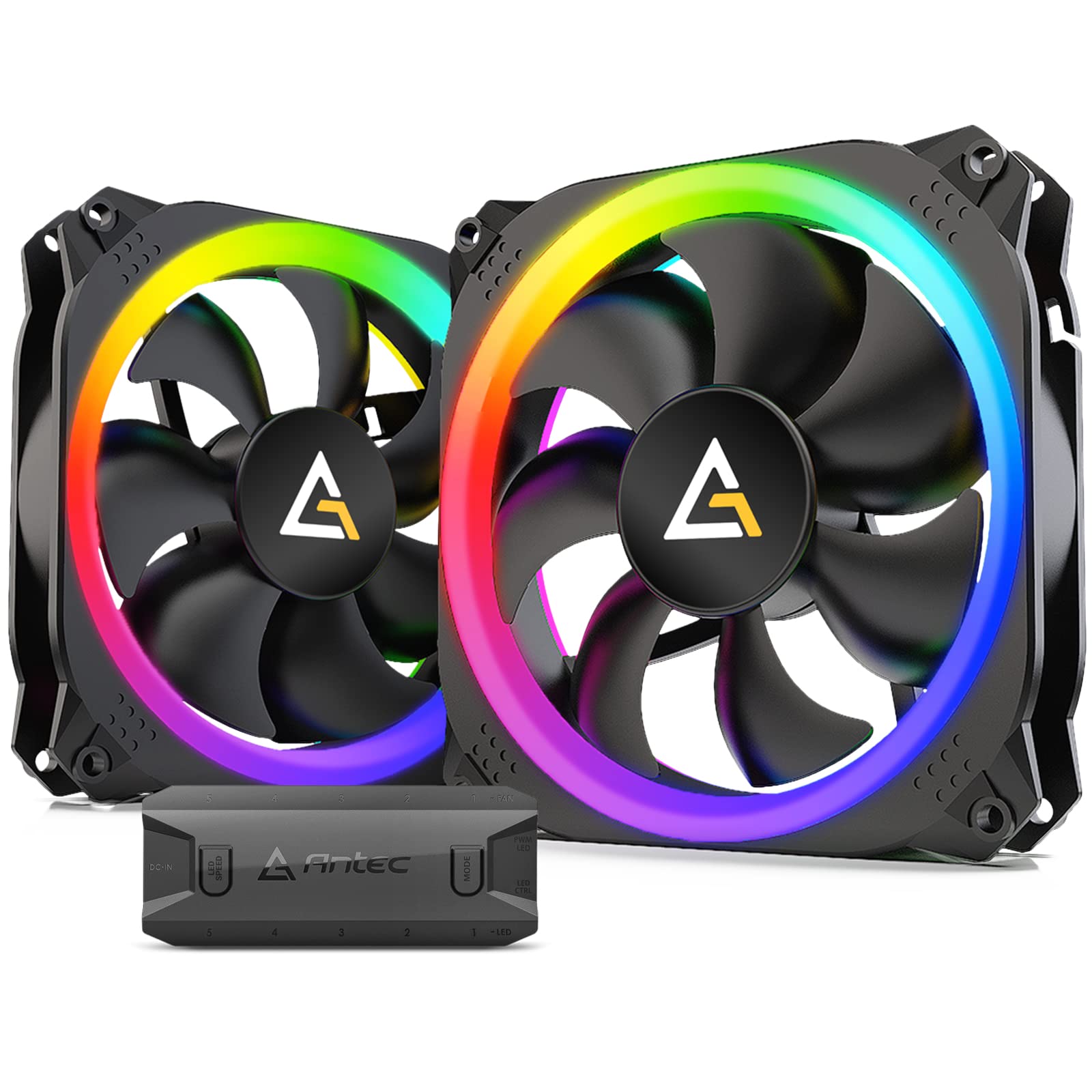Introduction
PC case fans play a crucial role in maintaining proper airflow and keeping your computer cool. However, the noise generated by these fans can be a source of frustration for many users, especially those who prefer a quiet computing experience. The noise level of a PC case fan is measured in decibels (dB), and understanding what is considered quiet can help you choose the right fan for your needs.
Decibels are a unit of measurement used to quantify sound intensity. The higher the dB value, the louder the noise. For comparison, a whisper is typically around 30 dB, while a loud conversation can reach 60 dB. When it comes to PC case fans, it’s important to strike a balance between cooling performance and noise output.
This article aims to provide you with a better understanding of dB levels and what is considered quiet for PC case fans. We will explore the factors that affect noise levels, the difference between quiet and loud fans, and how to choose the best fan for a quiet computing experience. So, let’s dive in and discover how to achieve a quieter PC without compromising on cooling efficiency.
What is dB?
Before delving into what is considered quiet for PC case fans, let’s first understand what decibels (dB) are. Decibels are used to measure the intensity of sound and are represented on a logarithmic scale. This means that a small increase in dB corresponds to a significant increase in sound intensity.
The decibel scale is based on the human perception of sound. Our hearing can detect a wide range of sound levels, from the faintest whispers to the loudest explosions. The decibel scale helps us quantify this range by assigning different values to different sound intensities.
To give you a sense of perspective, common sound sources and their approximate dB levels include a quiet library at around 30 dB, a normal conversation at 60 dB, a vacuum cleaner at 70 dB, and a jackhammer at a deafening 120 dB. Higher dB values indicate louder sound, while lower dB values indicate quieter sound.
When it comes to PC case fans, the noise level is usually expressed in dB. Fan noise is primarily generated by the rotation of the fan blades and the airflow it produces. As fans operate at high speeds to provide efficient cooling, they can produce substantial noise, which can be disruptive for users seeking a quiet computing environment.
It’s important to note that dB is a logarithmic scale, which means that a difference of 10 dB represents a tenfold increase or decrease in sound intensity. For example, a 50 dB fan is 10 times louder than a 40 dB fan. Therefore, even a small change in dB can have a noticeable impact on the perceived noise level.
Now that we have a better understanding of what decibels are and how they relate to sound intensity, let’s explore how noise levels are categorized and what is considered quiet when it comes to PC case fans.
Understanding Noise Levels
When it comes to PC case fans, understanding noise levels is crucial in determining the appropriate fan for your needs. Manufacturers often provide noise level ratings for their fans, typically measured in decibels (dB). These ratings give users an idea of how noisy a fan will be during operation.
To better understand noise levels, it’s essential to be familiar with the decibel (dB) scale. The decibel scale is logarithmic, meaning that every increase of 10 dB represents a tenfold increase in sound intensity. For example, a fan rated at 30 dB will be ten times louder than a fan rated at 20 dB.
In addition to the decibel scale, some manufacturers may include subjective descriptors to help users gauge the noise level of a fan. These descriptors often fall into categories such as “silent,” “quiet,” “moderate,” or “loud.” While these labels can provide a general idea, it’s important to keep in mind that they are subjective and may vary depending on the user’s perception.
To further complicate matters, noise perception can be influenced by a variety of factors, including individual sensitivity to sound and the ambient noise level of the environment. A fan that may be considered quiet in a noisy office setting might be perceived as loud in a quiet bedroom.
To provide users with a more objective measurement, some manufacturers also publish the fan’s sound pressure level (SPL). SPL is a measurement of the sound energy produced by a fan at a specific distance. The fan’s SPL is typically measured in dBA, which takes into account the human ear’s sensitivity to different frequencies.
When assessing noise levels for PC case fans, it’s important to consider your personal tolerance for noise and the specific environment in which the fan will be used. If you prioritize a quiet computing experience, you may opt for fans with lower noise level ratings, typically below 25 dB. However, if noise is not a major concern or if you need more cooling power, you may be willing to tolerate higher noise levels.
Now that we have a better understanding of noise levels and how they are measured, let’s explore the differences between quiet and loud PC case fans and the various factors that contribute to their noise output.
Quiet vs Loud PC Case Fans
When it comes to PC case fans, there can be significant differences in noise levels between quiet and loud fans. The noise level of a fan is influenced by various factors, including the fan’s design, size, rotational speed, and the quality of its bearings. Understanding these differences can help you choose the right fan to achieve the desired level of quietness.
Quiet PC case fans are designed with noise reduction in mind. They utilize technologies such as specialized fan blades, rubber dampening pads, and advanced bearing systems to minimize noise generation. These fans often operate at a lower rotational speed, resulting in a smoother and quieter airflow. Quiet fans are typically rated at around 25 dB or lower, providing a nearly silent computing experience.
In contrast, loud PC case fans are often associated with high-performance cooling solutions. These fans prioritize airflow and cooling power over noise reduction. They tend to operate at higher rotational speeds, which can generate more noise. Loud fans typically have noise level ratings above 30 dB, and some high-performance fans can reach 40 dB or higher. While these fans may be noisier, they can provide better cooling performance, making them ideal for gaming PCs or systems that require extensive heat dissipation.
It’s important to note that quietness is not solely determined by a fan’s noise level rating. Factors such as the type and quality of the bearings, the design of the fan blades, and the presence of vibration dampening features also play a significant role. Fans with better build quality and advanced technologies tend to produce less noise even at higher rotational speeds, offering a quieter computing experience without sacrificing cooling performance.
In addition, the size of the fan can influence its noise level. Smaller fans tend to spin faster, generating more noise, while larger fans can move the same amount of air at lower speeds, resulting in quieter operation. This is why larger case fans, such as 120mm or 140mm fans, are generally preferred for quiet setups.
Ultimately, the choice between a quiet or loud PC case fan depends on your specific needs and preferences. If you prioritize a quiet computing environment, opting for a fan with a lower noise level rating and advanced noise reduction features is recommended. However, if cooling performance is your main concern, you may need to accept a higher noise level to achieve optimal cooling efficiency.
Now that we have discussed the differences between quiet and loud PC case fans, let’s explore the various factors that can affect the noise level of a fan.
Factors Affecting Noise Level
The noise level of a PC case fan is influenced by several factors, and understanding these factors can help you select a fan that meets your desired noise level requirements. Here are some key factors that can affect the noise level of a fan:
1. Fan Size: The size of the fan can impact noise levels. Generally, larger fans tend to produce less noise compared to smaller fans. This is because larger fans can move the same amount of air at lower speeds, resulting in quieter operation.
2. Rotational Speed: The speed at which the fan rotates directly affects the noise level it produces. Fans operating at higher speeds generate more noise compared to those running at lower speeds. Choosing a fan with adjustable speed settings or opting for fans with lower maximum rotational speeds can help reduce noise levels.
3. Fan Design: The design of the fan, including the shape and size of the blades, can also impact noise levels. Fans with specially designed blades, such as those with curved or angled blades, can create a more efficient and quieter airflow.
4. Bearing Type: The type of bearing used in the fan can significantly affect noise levels. Sleeve bearings are generally noisier compared to ball bearings or fluid dynamic bearings. Fans with advanced bearing technologies, such as fluid dynamic bearings or magnetic levitation bearings, tend to produce less noise.
5. Build Quality: The build quality of the fan can influence its noise emission. Fans made with high-quality materials and precision engineering tend to have better balance and produce less noise during operation.
6. Fan Placement: The placement of the fan within the PC case can also impact noise levels. Fans located near hard drives or other components that generate noise can be louder due to vibration or air turbulence. Ensuring proper placement and alignment of the fan can help minimize these factors.
7. Fan Control: Having control over the fan speed can help regulate noise levels. Using fan control software or hardware, such as fan controllers or motherboard-based fan speed control, allows you to adjust the fan speed according to your needs, striking a balance between cooling performance and noise output.
Consider these factors when selecting a PC case fan, as they play a significant role in determining the noise level it produces. By choosing fans with larger sizes, lower rotational speeds, advanced bearing technologies, and optimized designs, you can achieve a quieter computing experience without compromising on cooling efficiency.
Now that we have explored the factors that affect the noise level of PC case fans, let’s discuss the ideal dB level for a quiet PC case fan.
Ideal dB Level for Quiet PC Case Fans
The ideal dB level for a quiet PC case fan can vary depending on personal preferences and the specific environment in which your computer operates. However, generally speaking, fans with noise level ratings below 25 dB are considered quiet and suitable for those seeking a peaceful computing experience.
A fan operating at around 20 dB or lower is almost silent and can provide a virtually noiseless environment. Fans rated between 20 dB and 25 dB are still considered very quiet and are suitable for most users who prioritize a quiet working or gaming environment.
It’s important to note that some fans marketed as “silent” or “ultra-quiet” may have noise level ratings slightly above 25 dB. This is because noise perception can vary from person to person, and what one considers quiet, another might find slightly noticeable. It’s always a good idea to read user reviews and test the fan in your own setup when possible to ensure it meets your desired noise level requirements.
However, it’s important to find a balance between noise level and cooling performance. Lower dB ratings often come at the expense of reduced airflow and cooling capabilities. If you have a high-performance system or require extensive heat dissipation, you may need to accept slightly higher noise levels in exchange for optimal cooling efficiency.
When considering the noise level of a fan, it’s also essential to consider the overall noise level of your computing environment. If you frequently work or game in a noisy setting or use headphones, you may be more tolerant of slightly higher fan noise. Conversely, if you work in a quiet office or prefer a silent workspace, you may need a fan with an even lower noise level.
Remember that achieving a truly quiet PC requires considering not only the noise level of the case fan but also other sources of noise, such as the power supply, CPU cooler, and graphics card. Keeping all these components as quiet as possible will help create a serene computing environment.
Now that we have discussed the ideal dB level for quiet PC case fans, let’s explore how to choose a fan that meets your noise and cooling requirements.
How to Choose a Quiet PC Case Fan
Choosing a quiet PC case fan involves considering various factors that contribute to both noise reduction and efficient cooling. Here are some essential guidelines to help you select a fan that meets your requirements for quiet operation:
1. Noise Level Rating: Look for fans with noise level ratings below 25 dB for a quiet computing experience. However, remember to balance noise level with cooling performance, as lower dB ratings may result in reduced airflow.
2. Fan Size: Opt for larger fans, such as 120mm or 140mm fans, as they tend to spin at lower speeds, generating less noise while maintaining adequate airflow.
3. Bearing Type: Choose fans with advanced bearing technologies, like fluid dynamic bearings or magnetic levitation bearings, which offer smoother operation and less noise compared to sleeve bearings.
4. Design Features: Look for fans with optimized blade designs and noise dampening features, such as rubber pads or corners, to reduce vibration and minimize turbulence-induced noise.
5. Speed Control: Consider fans with adjustable speed settings or PWM (pulse width modulation) control, allowing you to fine-tune the fan speed and noise level according to your needs.
6. Quality and Brand Reputation: Choose fans from reputable manufacturers known for producing high-quality products. These fans often undergo rigorous testing and offer superior build quality, resulting in quieter operation.
7. User Reviews and Recommendations: Read user reviews and seek recommendations from reliable sources to get insights into real-world experiences with specific fan models.
8. Consider Fan Placement: Properly position fans within your PC case to minimize noise due to air turbulence or vibrations from other components.
9. Combine with Other Quiet Components: Consider pairing a quiet PC case fan with other noise-reducing components, such as a quiet CPU cooler or power supply, to create an overall quiet computing environment.
Remember, the quietest PC case fan for you will depend on your specific needs, preferences, and budget. Assess your cooling requirements and noise tolerance, and choose a fan that strikes the right balance to create a peaceful computing experience.
By considering these factors and following these guidelines, you can select a quiet PC case fan that effectively cools your system while remaining virtually silent, enhancing your overall computing experience.
Now that we have explored how to choose a quiet PC case fan, let’s conclude our discussion on achieving a quieter and more enjoyable computing environment.
Conclusion
Having a quiet PC case fan is essential for creating a peaceful computing environment without compromising on cooling performance. By understanding decibels (dB), noise levels, and the factors that affect fan noise, you can make an informed decision when choosing a fan for your system.
When it comes to noise levels, fans rated below 25 dB are generally considered quiet. However, it’s important to strike a balance between noise reduction and cooling performance, as lower noise levels may result in reduced airflow and heat dissipation.
Factors such as fan size, rotational speed, bearing type, and design features all contribute to the overall noise level of a PC case fan. Choosing larger fans with advanced bearing technologies, optimized blade designs, and noise dampening features can significantly reduce noise while maintaining efficient cooling.
Furthermore, considering fan speed control, quality and brand reputation, user reviews, and proper fan placement can further enhance your experience with quiet PC case fans.
Remember that the ideal fan for your needs depends on your specific preferences, noise tolerance, and system requirements. By following the guidelines in this article, you can choose a fan that meets your desired noise level and cooling capabilities, creating a serene and efficient computing environment.
So, whether you need a whisper-quiet computer for a quiet office space or a gaming rig with optimal cooling, selecting the right quiet PC case fan is crucial. Invest in high-quality fans that offer both quiet operation and reliable performance to enjoy a quieter and more enjoyable computing experience.







